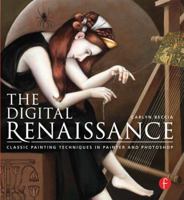Digital Collage and Painting: Using Photoshop and Painter to Create Fine Art
Select Format
Select Condition 
You Might Also Enjoy
Book Overview
Digital Collage and Painting proudly showcases the work of twenty-one talented digital artists. Each artist walks you through the creation of a piece of their art and lets you in on their secrets about equipment, software, favorite papers, and how their creative process begins. The artists included are: Audrey Bernstein Paul Biddle Leslye Bloom Stephen Burns Luzette Donohue Katrin Eismann Paul Elson Steven Friedman Ileana Fr?meta Grillo Bill Hall Julieanne Kost Rick Lieder Bobbi Doyle-Maher Ciro Marchetti Lou Oates Cher Threinen-Pendarvis James G. Respess Fay Sirkis Jeremy Sutton Maggie Taylor Pep Ventosa
Format:Paperback
Language:English
ISBN:0240807057
ISBN13:9780240807058
Release Date:June 2006
Publisher:Focal Press
Length:591 Pages
Weight:3.41 lbs.
Dimensions:1.5" x 7.6" x 9.8"
Customer Reviews
1 customer rating | 1 review
There are currently no reviews. Be the first to review this work.








































